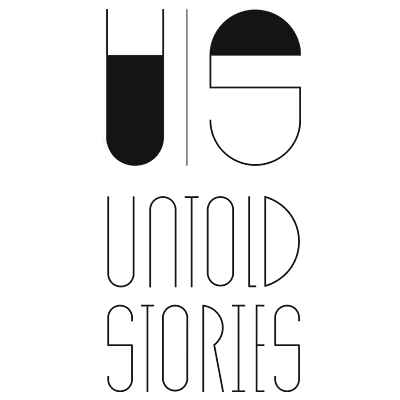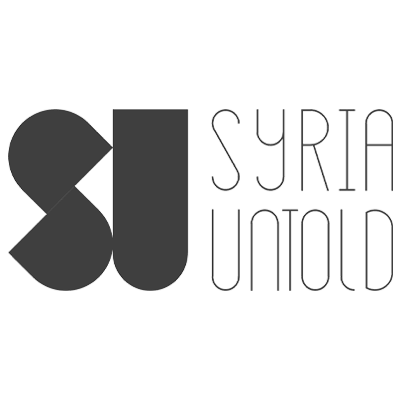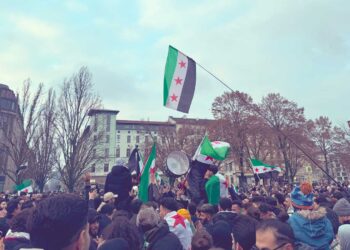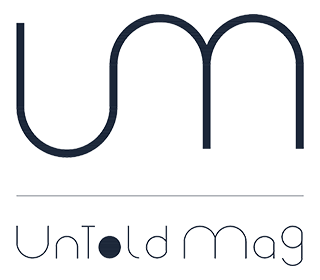Much remains untold when it comes to grief, and much feels unheard as we walk and connect to everything by our side. The dossier “Walking with grief” reflects on the practice of walking through the writing of six artists.
It has been a while since I have walked in nature.
The last time I did, it was someone else walking in my place, a stand-in.
Did you ever walk in someone else’s shoes?
Could you feel what they feel? Did your body remember what their body remembers?
I looked for a ‘stand-in’ after my residence permit, as a student in The Netherlands, was not extended by the Dutch authorities. I could object and they could reconsider their decision, but in the meanwhile, I had to wait in The Netherlands. I could not travel nor visit my home country Lebanon.
It took them a year and a half to revise their decision.
Waiting, the ground under my feet got radically unstable and I lost orientation. It felt like my body was clearly cast off the place where I am. A clear cartography of political powers and systems of exclusion brought itself back to the foreground, and my body got re-pinned on its pre-determined position on the map, there, where I am not.
I placed an advertisement looking for a stand-in: someone that would take my place in Lebanon for ten days, visiting people and places that constitute the idea home to me.
I chose Aitana, a Spanish choreography student in Amsterdam.
I gave her a notebook with150 pages of handwritten recollections and instructions of how to inhabit my place, how to embody my feelings and memories, and lists of what to smell, what to touch, what to look at etc…
She walked through my memories, physically and mentally. She made cartographies of love, loss, longing, grief, physical memory and entanglement visible with her presence, and through my absence.
My stand-in did not only perform actions that are initially performed by my body, but she also performed actions that were yet to be performed or cannot or will not be performed by me. This made Aitana alternately a stand-in and a body-double. She did not look like me, she did not speak Arabic and she was not my friend.
In preparation, I asked my best friend Bilal, if there were something he would like to do with me that he can’t do because I’m not there, or because when I go to Lebanon, I’m always busy with family and with getting myself together after being abroad for a while.
Bilal replied: “I’ve always wanted to take a walk at dawn, with you in nature; somewhere where we can step out of our daily routines and constructions. Somewhere where we can just be and communicate smoothly to bridge our distances and differences”.
Which ‘nature’ will he take you to?
Does nature sound the same there, as you know it?
Bilal picked Aitana up one early morning and drove to the hills of Jezzine, an hour’s drive from my parent’s home in Saida, south Lebanon.
Bilal took me to a rocky area, with a few ruins of old houses, lots of yellow flowers, a huge excavator, and some abandoned buildings heavily shelled during one of the wars with Israel, my stand-in described. He had brought a bottle of red wine, Ksara, which they drank on the grass at ten in the morning, overlooking the hills.
I don’t think Bilal relates to nature from a Western romantic perspective, from a nostalgia for a oneness with nature that has been lost in our hectic, ‘civilized’ lives. He is keenly aware of the fact that “nature” is variously conceptualized and thus he took a risk.
I think back to a book that fascinated Bilal and I and that we have discussed several times, Herman Hesse’s Siddhartha. It explores the spiritual journey to self-discovery.
I believe Bilal relates to nature as a place where we learn to stop searching, and begin to listen, perceive and reflect. A place where what is “sought” (“artha”) can be “attained” (“siddha”) through letting go and unlearning the constructs of ourselves. Because nature is infinitely wise, infinitely complex and infinitely irrational, it reveals the reality of our being as we contemplate it, and that reality is change.
She walked in nature with Bilal. She made sketches of that in her notebook.
I walk through her descriptions and memories of that walk. Through an other I was able to access unexplored landscapes but also to investigate and listen better to the ones tread many times.
Follow us!
As I walk through her narrations, I sense the misty green grass brushing against my calves and wetting my pants as I shift the weight of my hips between the rocks and the small white and yellow flowers blooming between the cracks. Slowly my body awakens, at the same pace of the sun rising behind us, shining on all the details around us, drenching all the colors with its rays. I can almost hear the echo of the houses and see the trees whose branches rise like triumphant arms from the battered walls, defying a history of loss. I notice my eyes trying to fill in the bullet holes in the dilapidated houses on the hills.
Displacing my weight on the soil carrying me, between Lebanon and The Netherlands, I tried to listen to the stories it withholds.
Turbulent and complex histories, human and geological, shape both their landscapes. Histories of occupation, colonization, migration, paths of enslaved people, exiles, murder, victims, also resonate and disintegrate in a landscape. Not only in the landscape of our memory, but also in sand, peat, stone, salt and water.
Does nature also experience pain or grief?
How does she grieve?
Looking at the bulleted destroyed houses, the memory of looking at Israeli tanks ravage the typical landscape of southern Lebanon; with its citrus groves on one side and the sea on the other, came rushing back to me.
A scene in which an Israeli tank destroys a banana plantation, while soldiers meanwhile jump out of the hatch, using their machine guns to perforate the landscape in one continuous stream of 360 degrees, floats through my bones to my skin. It is a scene from the animated film Waltz with Bashir, which I saw at Rialto cinema in Amsterdam.
I remember how my whole body felt devastated, how my shivers pierced the silence of the cinema hall, and how tears burst from my eyes and did not stop flowing in the weeks that followed. Somewhere in that scene, in the futility of the violence and in the abstraction of its representation in an illustrated form, was the signal for my war trauma to come to the surface and flood my body. With this particular landscape of the South, where I grew up, with all its lives, shapes, colors and smells, I feel a strong connection. It felt like they were ravaging my family.
Suppose we recognize the things we grew up with as family, as our non-human family, our heritage. Everything that grew in the backyard near you, or what you found on the beach, or in the swamp and among the rubble where you played as a child; everything that kept you company, that inspired you, that you could escape into, that could comfort you, that gave you courage, or literally nourished you, or revealed to you the meaning, the magic and contradictions of life. A flower, an insect, a shell, a stone, a patch, a stick, a mud puddle, the sound of a river, a mountain: your family.
In another scene of the film, the soldiers take a group photo on the tank, on a sunny, quiet morning in the hills of the South. Then they begin driving the tank through the countryside while eating candy. A Hebrew pop song louds as a soundtrack: “Lebanon, good morning. Too much pain to go on, Lebanon, good morning.”
One of the soldiers recalls, “It was really an idyllic, pastoral scene. We enjoyed the scenery during the slow drive. In a tank, you always feel safe.” And as he continues to repeat: “In the tank we always feel protected”, the tank drives over cars, crushes them, and turns the lovely landscape into a violated environment, a ruin. The song continues, “Lebanon, you bleed to death in my arms. You are the love of my life. My short, short life.”
For a moment nature grants the young soldiers her innocence, for a moment they seem free of their roles and what they represent. At the same time, danger lurks in nature: in the next scene a sudden change of power takes place, when a bullet shoots out of the landscape and hits one of the soldiers in the neck.
In yet another scene, the soldiers walk in front of the tank among the orange trees of an orchard to the sounds of classical piano music. A beautiful light dances through the leaves, enlivening their tense faces. And even here this serenity of the landscape is disrupted: a little boy hiding among the trees points an RPG-7 at the tank and fires. The classical music continues to play and stops only when the soldiers fire their machine guns and the little boy lies among the orange trees on the fertile ground, alone, in a pool of his own blood.
What is trauma made of?
And where does it reside in our body?
Can trauma become a residue, namely something that is ‘left behind’? Something in the residue of our actions and bodies that goes to live permanently in the earth and in nature? Or will trauma become a kind of fossil that can tell something about our era in the future?
Or do we exist at all only as residues? Residues of people who came before us; of histories, relationships and stories told and untold.
It seems so unnatural to need a permit to reside anywhere on this earth.
I walk towards the holes in the walls again, the morning sunlight radiating through them. I pass my hands over their skin, and my memory transports me to a dance therapy workshop I once had in Amsterdam.
At the workshop, each participant had to draw her body on a white A4 piece of paper.
I ran the tip of my pencil across the paper, lightly drew the outline of a body with wide-open arms; the lines of legs, arms, and belly extended to the edges of the paper, to the back, and beyond. On one side was my belly and on the other was my back. Then I poked holes of different sizes in my paper body with the tip of the pencil.
Can you tell something about your drawing, your body, the dance therapist asked? She tried to ask the question as neutrally as possible, but I could feel her holding her breath as she looked at it.
I like to think of my body as porous. As a body that longs to become formless or to be able to transcend its own barriers and forms, I gently told all the confused eyes and ears in the circle around me.
Aren’t our body boundaries necessary to mark our freedom and our individuality? Is repairing those gaps a way to heal, she exclaimed?
But I did not draw my wounds, these are the pores of my body.
I prefer the utopia of plurality to that of individuality.
A walk in nature: An ode to friendship, to absence, to presence, to change and to the multiple marked bodies, landscapes and histories that unfold.
A walk in someone else’s shoes: An ode to grief, to distance, to proximity, to the performativity of identity, to plurality, and to where we are not.








